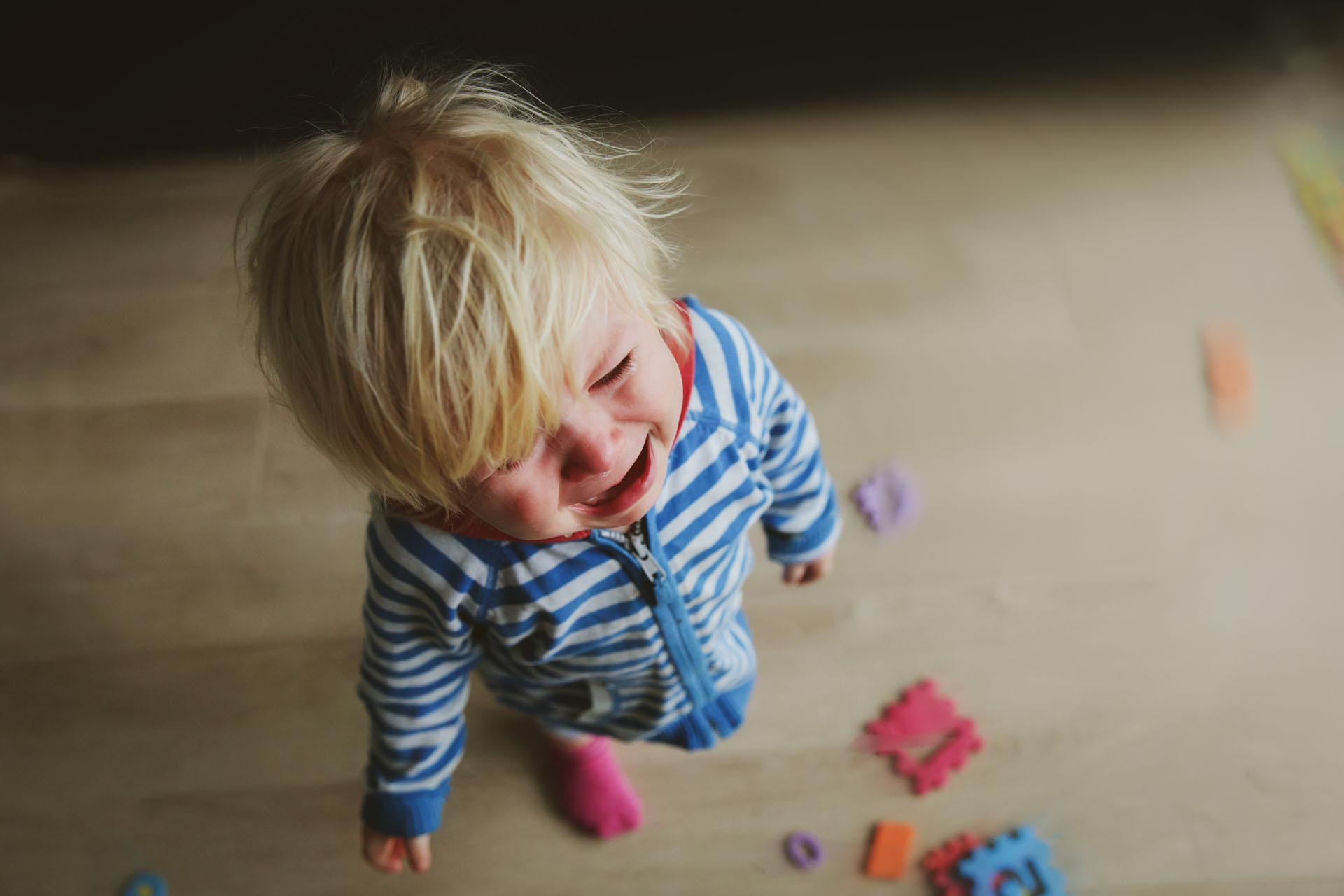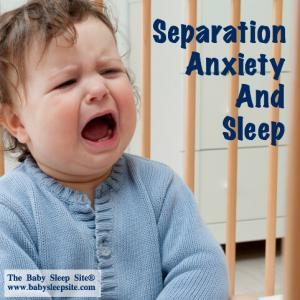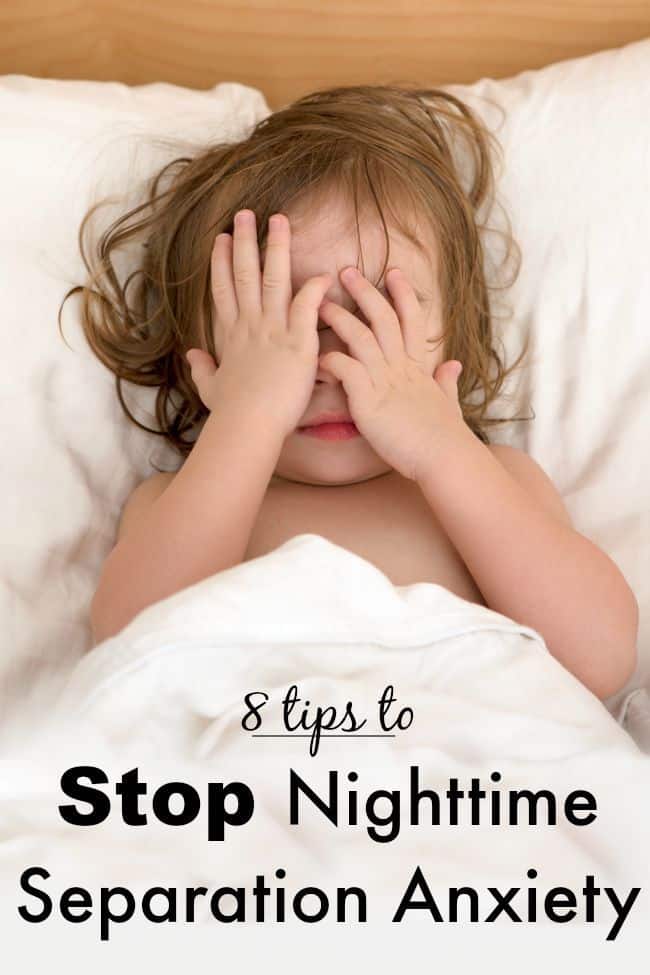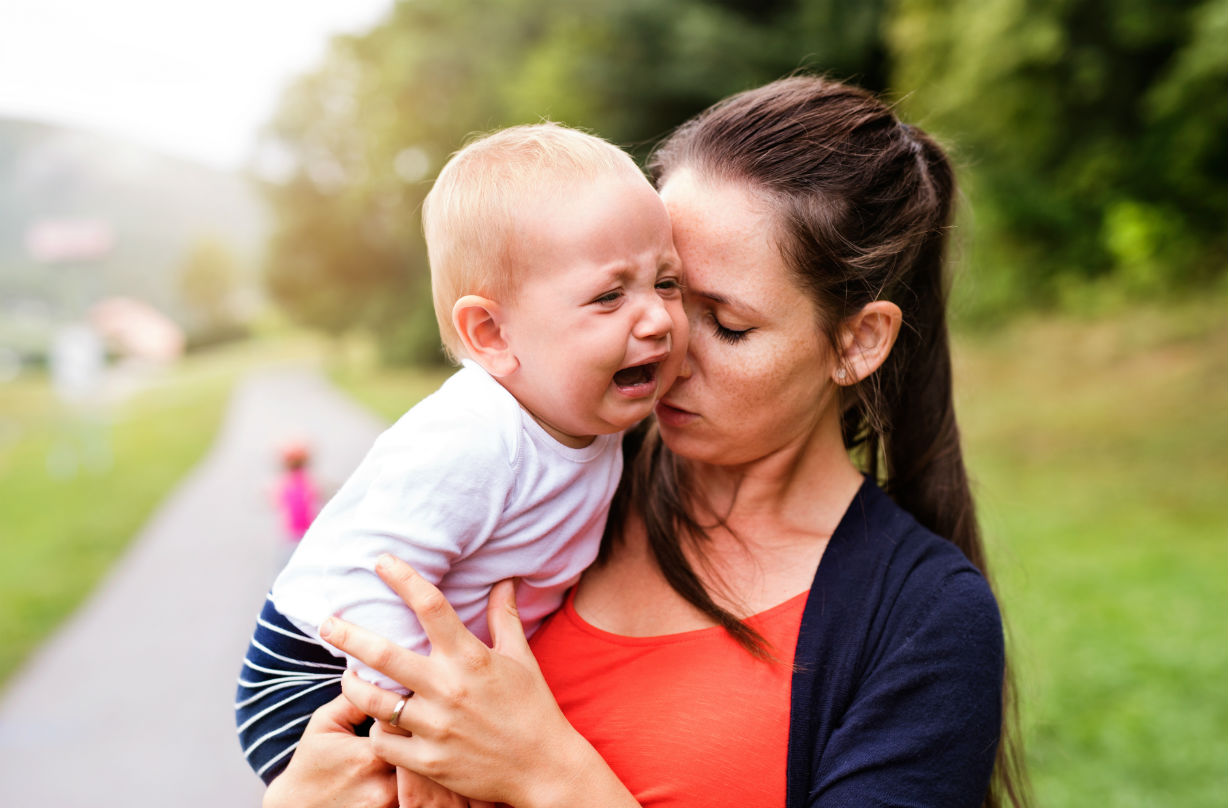Separation anxiety develops after a child gains an understanding of object permanence. Yes to a degree.
 Age By Age Guide To Coping With Separation Anxiety Parentscanada
Age By Age Guide To Coping With Separation Anxiety Parentscanada
But the symptoms of SAD are more severe.

Separation anxiety in babies. Prior to that they dont see you or another caregiver as separate from themselves so theyre easy peasy with just about everyone. Separation anxiety is just part of your babys development. Separation anxiety in babies is an absolutely normal and healthy phase of child development.
Theyre in the process of learning about object permanence which means that they understand that something continues to exist even if they cant see it. Childrens brains arent mature enough yet to rationalize fearful and distressing emotions. Separation anxiety in infants often starts between 8 and 14 months old.
Separation anxiety can start at around 8 months and reach its peak in babies aged 14-18 months. This is called object permanence. Its a fancy term that basically means your baby knows that objects and people like yourself exist even if theyre not in the room or close by.
When does separation anxiety in babies start. Separation anxiety is actually normal and experts have found that it starts when your child is around nine months old and all the way to when they turn 14 to 18 months. Babies and toddlers often get clingy and cry if you or their other carers leave them even for a short time.
Separation anxiety and fear of strangers is common in young children between the ages of 6 months and 3 years but its a normal part of your childs development and they usually grow out of it. Many children will experience several phases of it before they. Separation anxiety is a normal stage of development for infants and toddlers.
These anxieties gradually. What is separation anxiety in children. They dont yet have the cognitive abilities to cope with them.
Young children often experience a period of separation anxiety but most children outgrow separation anxiety by about 3 years of age. Separation anxiety is a normal part of development for children. Separation anxiety refers to a developmental milestone that occurs in most babies between 6 to 7 months of age when they gain sense of object permanence.
Separation anxiety is childrens common and normal fear of being away from their parents or carers. At certain stages most babies or toddlers will show true anxiety and become upset at the prospect or reality of being separated from a parent. It can rear its head when youre dropping your baby off at daycareor when youre simply going to the bathroom.
The disturbance is not better explained by another mental disorder such as refusing to leave home because of. Read on to learn more about separation anxiety in infants and how you can handle it like a champ. The fear anxiety or avoidance is persistent lasting at least 4 weeks in children and adolescents and typically 6 months or more in adults.
It will lessen and pass. Nearly all children between the ages of 18 months and 3 years old have separation anxiety and are clingy to some degree. First things first what is separation anxiety.
Kids often go through a phase when theyre clingy and afraid of unfamiliar people and places. A child must have symptoms of SAD for at least 4 weeks. According to the American Academy of Pediatrics AAP most babies experience a robust separation anxiety around 9 months of age.
Each baby is different but typical baby separation anxiety is said to occur somewhere between 7-18 months and last about 2-5 months. When Does Separation Anxiety Start. They suddenly understand that you can leave but dont realize that youll come back and feel worried.
Separation anxiety is normal in very young children. We know what youre thinking. Although some babies display object permanence and separation anxiety as early as 4 to 5 months of age most develop more robust separation anxiety at around 9.
All children and teens feel some anxiety. Disturbances causes clinically significant distress or impairment in social academic occupational or other important areas of functioning. Separation anxiety is a normal stage of emotional development that starts when babies begin to understand that things and people exist even when theyre not present a concept called object permanence.
Separation anxiety is normal in very young children those between 8 and 14 months old. It typically develops by 8 to 12 months and usually ends for toddlers around ages 2 or 3 Loftin says. Even well-adjusted babies experience separation anxiety and most babies also experience fears during the night.
Separation anxiety most commonly occurs at night as the fear of being left alone and expected to fall asleep affects most babies and toddlers and even some adults. It usually goes away gradually throughout early childhood. Thats because between 4 and 7 months babies begin to realize that people and objects exist even when they cant see them.
For many babies separation anxiety starts at around 8 months of age but you may start seeing indications of separation anxiety in your baby as early as 4 months. Once your infant realizes youre really gone when you are it may leave him unsettled. It is a normal part of growing up.
It typically occurs in most babies between 6 to 8 months old when they realize that they are independent of you. Separation anxiety in your baby starts basically because theyre getting smarter. The Good News about Baby Separation Anxiety Its a positive healthy sign.
Its most common with babies and toddlers but can also be experienced by teenagers transitioning to high school or those leaving for college. A fearful baby may need your help to soothe and calm them. According to the experts at Calm Clinic parents should do their best to not respond to their child if they are crying in the night for no reason.
The behaviour you might see when children are separated from parents is sometimes called separation protest.
Keep your goodbyes brief. Separation anxiety is one of the most common sleep disruptors so developing a plan to handle it and making sure your spouse is on the same page can create some consistency in your childs routine and help them feel more comfortable.
 How To Handle Baby Or Toddler S Separation Anxiety Sleep Issues
How To Handle Baby Or Toddler S Separation Anxiety Sleep Issues
In time this separation anxiety will pass and bedtime struggles will become a memory.

Separation anxiety toddler sleep. Fortunately you can prevent sleep problems at night during separation anxiety phases with a few simple ideas and techniques right below. However if the anxiety persists and starts to interfere with daily activities such as school and playtime there might be something larger at work. This is a no rmal stage in childrens emotional.
And it may be even harder to deal with the naptime and bedtime drama this time around since your toddlers separation anxiety will often manifest as full-blown temper tantrums. However some studies like Sleep Problems and Separation Anxiety in Preschool-Aged Children. It goes something like this.
It may not make the phase go faster but it will ensure that it wont last longer. The words separation anxiety are often used during the early toddler years. Well thats a tricky one.
Follow these tips to help banish your little ones worries. Separation anxiety is a major contributor to sleeping problems in toddlers. Separation anxiety and fear Toddler night waking is commonly due to separation anxiety.
Separation anxiety is known to be the most common cause of sleep anxiety in children because most children fear of being alone by themselves without their parent or guardian being with them. Learn how you can support your little one and maintain healthy sleep habits. As frustrating as this may be its an important step in your babys development.
Consult your pediatrician if you notice physical symptoms that manifest in anticipation of separation including stomachaches headaches and dizziness. Separation anxiety in older babies and toddlers is normal and a good sign because they are at a point where they are forming bonds with their parents or caregivers. Your baby may begin waking several times at night crying or refusing to settle down for sleep.
Not only does this affect your toddler going to sleep but there are also other signs of separation anxiety in toddlers such as the following sleep disturbances. Some separation anxiety is normal but its best for parents to avoid reinforcing it. A toddler who once transitioned to a nanny or daycare setting with ease screams and cries when the caregiver leaves.
During this phase of emotional development your baby may get up several times during the night and cry for you or your partner. Babys new-found understanding of object permanence leads to a different response when you leave the room compared to the previous months before. Baby separation anxiety is an often unrecognized cause of disturbed sleep.
Your child refuses to settle at night or for naps stops sleeping through the night often wakes up crying cant self-soothe anymore etc. Separation anxiety in toddlers sleep can be a difficult thing to overcome especially because by bedtime everyone in the house is tired and probably lacking some patience. During this stage which can last for several months a child may wake several times and cry anxiously for one or both parents often expressing a strong preference for one.
But the period of extreme neediness usually peaks between 10 and 18 months and eases by 2 years. A Path Analysis suggest that sleep disruption is also caused due to separation anxiety. Just as it did in infancy separation anxiety can really wreck your toddlers sleep and sleep training your toddler.
But first a quick look at what it is and how to spot it. Sometimes I see separation anxiety also pop up at bedtime. You put your baby in bed as you have been for months.
Separation anxiety can lead to disrupted sleep. Separation anxiety in toddlers may last months or years but theres plenty you can do to ease symptoms. Separation anxiety tends to wax and wane throughout the toddler years.
Waking up multiple times during the night Waking up crying in the morning They want to sleep in your bed every night. Another reason could be bullying by school kids or any other disturbing thoughts related to pressure at school or any other outside influence which may make them feel as if they are stuck in this trouble forever. Beginning in the second half of the first year separation anxiety can cause many nights with disrupted sleep.
As toddlers become more aware of their surroundings and begin to understand the world around them they struggle to separate from caregivers. She should be fully out of it by age 3. Separation anxiety and sleep.
You may or may not have experienced separation anxiety in sleep when your toddler was an infant. In fact episodes of separation anxiety usually effect sleep as well as who your child chooses to spend her time with. It can make them resistant to going to bed cry out once they are in bed or fail to get back to sleep if they wake up in the night.
Learn about sleep separation anxiety in babies toddlers. When our toddlers wake up in the middle of the night it almost always ends up with them coming over to the master bedroom to sleep with mom and dad. Its common during these times of distress for your baby to express a preference for one parent over the other.
A severe anxiety disorder can delay or derail child development. Anxiety may present as fear or worry but can also make children irritable and angry.
 How To Deal With Separation Anxiety In Babies Toddlers And Parents Goodtoknow
How To Deal With Separation Anxiety In Babies Toddlers And Parents Goodtoknow
Babies can show signs of separation anxiety as early as 6 or 7 months but for most babies it peaks between 10 to 18 months and eases up by 2 years.

Anxiety in infants. Anxiety in Children is Caused by Frightening Experiences and Events. Separation anxiety is when your baby feels distressed when you leave the room. Anxiety in infants Well now turn to the specific question of anxiety in infancy.
A panic attack is a sudden intense episode of anxiety with no apparent outside cause. Paediatrician Dr Vinit Samdani explains what stranger anxiety in infants is all about. Once your infant realizes youre really gone when you are it may leave him unsettled.
Children can suffer from anxiety for very diverse causes. Occasional anxiety is normal. Some anxious children keep their worries to themselves and thus the symptoms can be missed.
In fact as your baby goes through this you shouldnt let it stop you from taking care of yourself. Ask your doctor about this possibility. One of the most frequent reasons for anxiety in infants is separation anxiety disorder.
Separation anxiety in infants often starts between 8 and 14 months old. It can rear its head when youre dropping your baby off at daycare or when youre simply going to the bathroom. Anxiety symptoms can also include trouble sleeping as well as physical symptoms like fatigue headaches or stomachaches.
Your baby may get even more upset if there is a strange person around. But the period of extreme neediness usually peaks between 10 and 18 months and eases by 2 years. Stranger anxiety is manifested by crying when an unfamiliar person approaches.
Separation anxiety tends to wax and wane throughout the toddler years. But talk to your pediatrician if anxiety causes your child to limit activities worry often or avoid camp or day care. This anxiety is a feeling of worry when a parent or guardian either leaves the room.
Any discussion of infant anxiety must include an understanding of temperament or the innate qualities that babies come into the world with the presence or absence of parental or caretakers anxiety and anxiety in relationship to the rapid developmental changes in infancy. Stranger anxiety is linked with the infants developmental task of distinguishing the familiar from the unfamiliar. 6 to 7 months.
For babies under two years its most common during the following ages. According to the American Academy of Pediatrics AAP most. Separation anxiety is most common in infants between 8 and 12 months though it may start earlier and can definitely reappear later.
Stranger anxiety typically peaks between 12 and 15 months and then begins to gradually decrease as your baby continues to grow and develop. Around this time and sometimes earlier many infants gain a sense of object permanence. She should be fully out of it by age 3.
Your child may tremble or feel dizzy or numb. The development of stranger anxiety coincides with a. This does not point to a disorder.
Treating anxiety in children. Most commonly separation anxiety strikes when you leave your child to go to work or run an errand. Separation anxiety is common in children aged between 18 months and 3 years.
But once they turn nine months they are likely to achieve this interesting milestone wherein the baby will give importance to safety factor. Sometimes anxiety is a side effect of medicine. Certain patterns of brain connectivity seen in newborn babies can predict the babys likelihood of showing early symptoms of mental illness including sadness excessive shyness nervousness and separation anxiety according to findings published in the February 2017 issue of the Journal of the American Academy of Child and Adolescent Psychiatry.
They become anxious and express their feelings by crying when you are out of their sight. When does it most commonly occur. Some of them could be.
Your childs heart pounds and they may feel short of breath. Oppositional Defiant Disorder in Children. Sure your baby is amazing but mommies need breaks too even when your kiddo wont want to let you go.
Their parents divorce or a similar loss in their life. Causes of anxiety in children. Although some babies display object permanence and separation anxiety as early as 4 to 5 months of age most develop more robust separation anxiety at around 9 months.
It is normal when it starts at about 8 to 9 months and usually abates by age 2 years. The development of anxiety in children is linked to a situation or perceived event that is frightening or traumatizing. If things get too overwhelming youre allowed to take a breath.
For example Sarahs parents contacted me frantically stating that their five-year-old daughter no longer wanted to go to school. Separation anxiety develops after a child gains an understanding of object permanence. Separation anxiety typically lasts two to three weeks and can pop up throughout infancy and toddlerhood as well as later in childhood.
So till the age of nine months your baby will be happy to be held by anyone that he sees or takes the baby. Your babys anxiety is merely a temporary hiccup in their development.
6 to 7 months. This does not point to a disorder.
 Separation Anxiety In Babies Kids Future Day Care Center Daycare Childcare Early Education In Uptown Chicago
Separation Anxiety In Babies Kids Future Day Care Center Daycare Childcare Early Education In Uptown Chicago
Stranger anxiety and separation anxiety often begin around the same time and can trigger similar fears in your baby.

Anxiety around babies. In other words out of sight no longer means out of. Separation anxiety in infants often starts between 8 and 14 months old. I always get anxiety if a mass group of them walks around me.
Why separation anxiety happens. It will lessen and pass. Remember that when your baby is sick or extra-tired their separation anxiety may ramp up.
Each baby is different but typical baby separation anxiety is said to occur somewhere between 7-18 months and last about 2-5 months. For many babies separation anxiety starts at around 8 months of age but you may start seeing indications of separation anxiety in your baby as early as 4 months. Stranger anxiety is the distress that babies experience when they meet or are left in the care of people who are unfamiliar to them.
Thats because between 4 and 7 months babies begin to realize that people and objects exist even when they cant see them. Around this time and sometimes earlier many infants gain a sense of object permanence. For babies under two years its most common during the following ages.
Shes also capable of representational thinking now so she can picture objects like you in her mind after theyre no longer visible. Around 6 months or so your baby begins to realize that you and she are separate people which means that you could leave her. This anxiety is a feeling of worry when a parent or guardian either leaves the room.
Most commonly separation anxiety strikes when you leave your child to go to work or run an errand. I cant hold babies. In one study babies were kept apart from their mothers for a short time while the moms completed a stressful task.
All babies and children from time to time will experience some fear or anxiety Anxiety is a feeling we get that is similar to fear or worry that occurs when we are in a situation that is uncomfortable or threatening. Starting at around nine months when your baby can sit up independently and consistently its fine to set up a safe childproof space a play yard or an area where you can see them but they cant see you where your baby can. At work the other day I was on my break sitting in the corner of the front store.
Many kids become. The Good the Bad. Anxiety is more than shyness Anxiety unlike shyness is a condition often accompanied by physical symptoms and typically causes sufferers discomfort and stress.
Separation anxiety in babies is an absolutely normal and healthy phase of child development. Your baby will start to notice a difference between you and other people at around four months of age and around this time or after they may start to show signs of discomfort or even fear around those they dont know. It can rear its head when youre dropping your baby off at daycare or when youre simply going to the bathroom.
When reunited the babies showed signs of stress too. This is called object permanence. The Good News about Baby Separation Anxiety Its a positive healthy sign.
I HATE babyshowers and have been blessed with tons of baby cousins. First take a deep breath. Look for physical complaints like headaches or stomach aches especially around times that children might be feeling fearful or apprehensive says Otto.
According to a study in Plos One this might mean theyre feeling jealous and anxious around your baby. Women often feel more protective towards the baby after a trauma because they were primed by the belief that something bad was going to happen to the baby or themselves. Stranger anxiety is a perfectly normal developmental stage that.
Babies can show signs of separation anxiety as early as 6 or 7 months but for most babies it peaks between 10 to 18 months and eases up by 2 years. Separation anxiety is common in children aged between 18 months and 3 years. If you have had a traumatic childbirth your anxiety levels are already high so when the baby cries the anxiety is amplified even higher.
According to the American Academy of Pediatrics AAP most. The two age groups I have terrible SA around are babies and 12-30 year olds. Separation anxiety typically lasts two to three weeks and can pop up throughout infancy and toddlerhood as well as later in childhood.
Separation anxiety is most common in infants between 8 and 12 months though it may start earlier and can definitely reappear later. While most child development specialists believe that stranger anxiety begins around 6 to 9 months depending on the child infants can also react in anxious ways to strangers especially if theyre picked up suddenly or by someone unfamiliar.